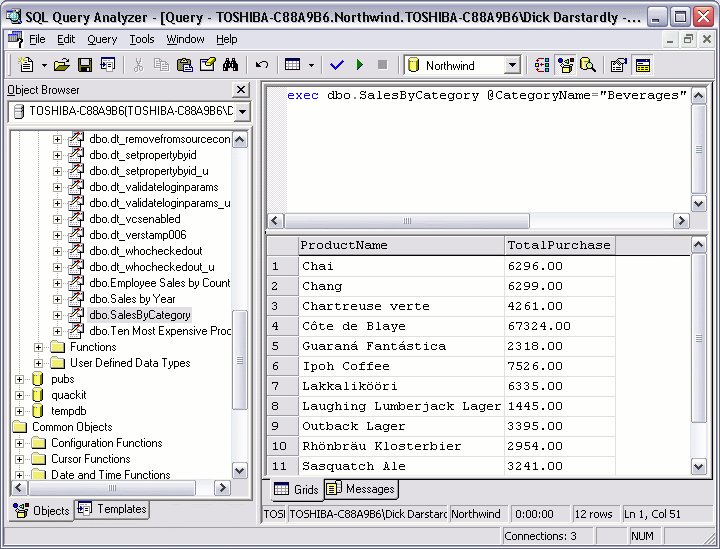Oracle Stored Procedure Update Table Example Of Data

Calling Oracle stored procedures from Microsoft. NETIntroduction. This article is intended to illustrate how to illustrate how to call Oracle stored procedures and functions from Microsoft. NET through the Microsoft. NET Oracle provider and its object model residing in the namespace System.
Data. Oracle. Client. I will cover several possible scenarios with advanced examples. Executing a stored procedure. Let's begin with definitions.
A procedure is a module that performs one or more actions. A function is a module that returns a value and unlike procedures a call to a function can exist only as part of an executable such as an element in an expression or the value assigned as default in a declaration of a variable. The first example illustrates how to call an Oracle procedure passing input parameters and retrieving value by output parameters. For all the examples, we're going to use the default database ORCL which comes with the Oracle database installation. The following code in Listing 1 shows how to create a procedure named count. The first thing to do is to import the object's class residing in the namespace System.
Data. Oracle. Client with the using directive. Then you must set up the parameters and finally call the procedure using Execute. Non. Query method of the Oracle. Command object. Using System; using System. Collections. Generic; using System. Text; using System.
- Overloading oracle stored procedures. Overloading oracle functions and stored procedures. Oracle Database Tips by Donald BurlesonJune 15, 2015.
- Oracle INSERT Stored Procedure example. Source code to create and add "sql insert stored procedure" to catalog. The following example is for creating a simple.
- A stored procedure in Oracle database, with IN and OUT parameters. Later, calls it via JDBC. CREATE OR REPLACE PROCEDURE getDBUSERByUserId( p
- Oracle UPDATE Stored Procedure example. Source code to create and add sql update stored procedure to catalog. The following example is for creating a simple update.
Data. Oracle. Client; using System. Data; namespace Calling. Oracle. Stored. Proc. Let's see the example.
Frequently asked questions: Oracle JVM and Java Stored Procedures. How to check whether JVM for Oracle is installed or not in database? How does one load Java Source.
The following code in Listing 3 shows how to create a function named get. It's very similar to the former procedure in the previous section. As you can see, we need to define a return parameter to get the returned value. The other part of the code is similar for calling a procedure. System; using System.
This article is intended to illustrate how to illustrate how to call Oracle stored procedures and functions from Microsoft.NET through the Microsoft.NET Oracle. Mobile Master Professional 6 9 4 24942.

Collections. Generic; using System. Text; using System. Data. Oracle. Client; using System.
Data; namespace Calling. Oracle. Stored. Proc. To retrieve the result set, you must define a REF CURSOR output parameter in a procedure or a function to pass the cursor back to your application. Now we're going to define a procedure which opens and sends a cursor variable to our application. Let's define the package and procedure header as shown in Listing 5. The creation of the package body. Now let's see in Listing 7 the application code calling the procedure inside the package.
See the name syntax for calling the procedure contained within a package . In order to get a cursor, you need to define a cursor parameter with the Parameter.
Direction set up to Output and finally call the Execute. Reader method in the Oracle. Command instance.
Using System; using System. Collections. Generic; using System. Text; using System.
Data. Oracle. Client; using System. Data; namespace Calling.
Oracle. Stored. Proc. As you can see, to fill the data table, we need to define the CRUD (create, read, update, delete) operations through the Oracle. Command and associate it to the Data. Adapter. I fill the data table, and print out a message with the number of employees so far, and then add a new row representing one employee entity. Download Filme A Caixa Dublado 1964. System; using System. Collections. Generic; using System. Text; using System.
Data. Oracle. Client; using System. Data; namespace Calling. Oracle. Stored. Proc. I tried to cover all the possible scenario of one . NET application consuming the data provided by stored procedures in Oracle databases.